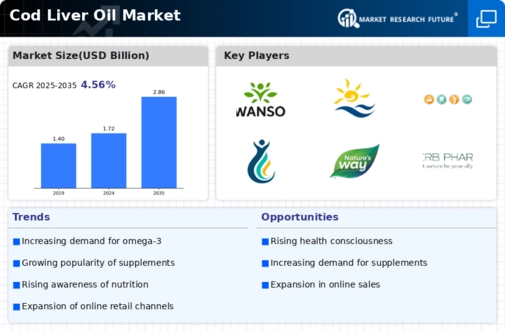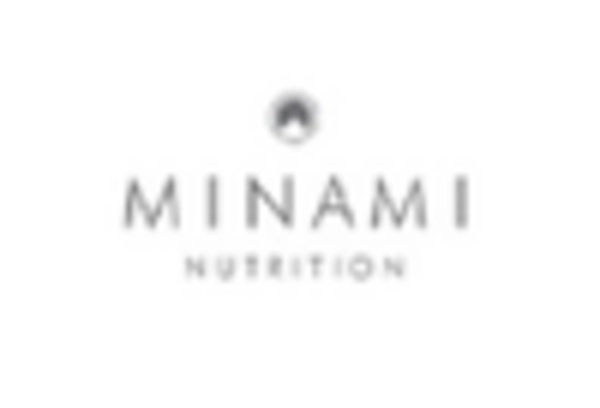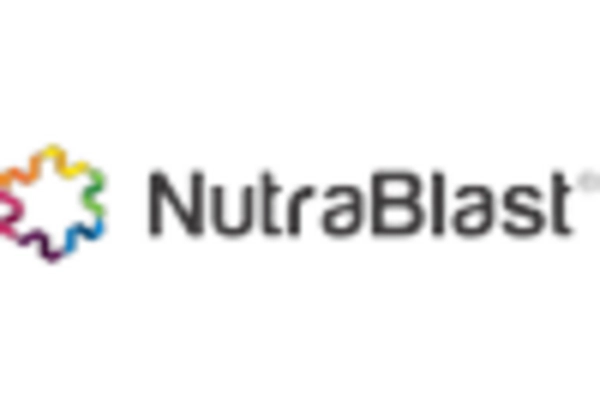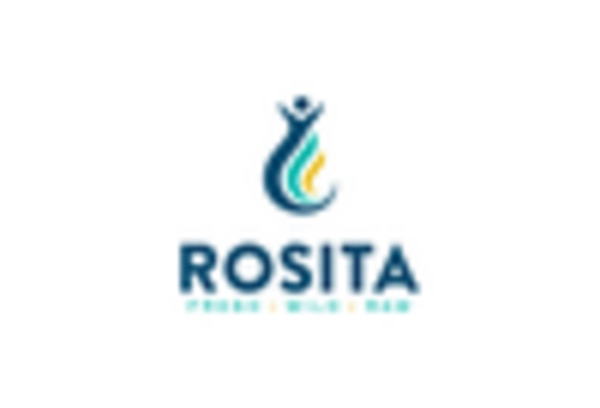Market Trends
Introduction
Cod liver oil is a market that is experiencing considerable changes. New extraction and processing methods are improving product quality and bioavailability. New regulations on health claims and catching and harvesting are influencing the market structure. A growing focus on health and well-being, especially in the context of prevention and natural food supplements, is influencing purchasing decisions. These trends are strategically important for the various players as they seek to navigate the competition, adapt to the regulatory framework, and align their product offerings with changing consumer preferences.
Top Trends
-
Increased Demand for Omega-3 Fatty Acids
In recent years, the increasing popularity of cod liver oil has been due to the growing awareness of the beneficial properties of -3 fatty acids. According to industry estimates, by 2025 the demand for -3 fatty acid supplements will have increased by 15 percent. In response, the companies have been extending their product ranges to include higher concentrations of -3 fatty acids. This trend is likely to lead to innovation in extraction and formulation processes, which will affect production costs and price strategies. -
Sustainability and Ethical Sourcing
The importance of the environment is increasingly demanded by consumers, and this has prompted brands to adopt eco-friendly sourcing practices. This is why, in the eyes of consumers, the most important brands are now emphasizing certifications like MSC (Marine Stewardship Council) and AsureQuality. According to research, 70% of consumers prefer to buy sustainable products. This trend may lead to higher operating costs, but it also increases brand loyalty and differentiation. -
Growth of Plant-Based Alternatives
The growing popularity of vegetarianism and the plant-based diet has increased interest in alternatives to cod liver oil. Companies are now examining algae-based supplements as possible replacements. Sales of plant-based omega-3 products have increased by 20 percent in the past year. This trend may force the major cod liver oil brands to diversify in order to remain competitive. -
Focus on Transparency and Labeling
Product composition and sourcing are subject to greater transparency by consumers. Brands are responding by investing in clearer communication strategies. A study found that 65% of consumers are more likely to buy products with transparent labelling. This trend will have a major impact on supply chains and marketing strategies. -
Personalized Nutrition Trends
In the cod-liver oil market, the trend towards individual nutrition is reflected in the growing demand for dietary supplements that meet individual health needs. Companies are using the latest technology to offer tailor-made products that can enhance customer satisfaction. According to forecasts, the share of dietary supplements is expected to grow by 30 per cent in the next few years. This trend may lead to increased R&D spending and closer cooperation with health technology companies. -
Expansion of Online Retail Channels
E-business has transformed the way consumers buy cod liver oil. Sales of cod liver oil have risen significantly. In 2022, e-businesses grew by 40%. Brands are investing in digital marketing and e-business platforms to catch this growing market. This trend may lead to changes in distribution strategies and increased competition among e-businesses. -
Health Claims and Regulatory Scrutiny
In the wake of increasing attention to cod-liver oil, the scrutiny of regulatory authorities is growing. In many countries, health claims are being restricted and this can affect marketing strategies. A recent analysis revealed that over half of the brands studied had problems with regulatory compliance. This may result in a greater need to invest in regulatory compliance and quality assurance. -
Innovations in Delivery Formats
This market has been growing for a long time and it is characterized by the development of new formats such as gummies and soft gels. According to research, gummies have gained popularity in the younger population by 25 percent. This trend has made it necessary for companies to diversify their formats, which leads to greater complexity in the production and marketing of the products. -
Integration of Functional Ingredients
Brands are increasingly putting more and more nutrients in their cod liver oil. Examples include the addition of vitamins D and E, which are becoming more and more popular with consumers. According to the figures, the products with added nutrients are growing by 15 percent. This trend can lead to innovation in product development and create new market segments. -
Rising Popularity of Subscription Services
Subscription services for dietary supplements, including cod liver oil, are growing in popularity as consumers seek convenience. A survey showed that 30% of supplement users prefer subscription models with regular deliveries. Brands are responding with subscription services that can help them increase customer retention and ensure predictable revenue.
Conclusion: Navigating the Cod Liver Oil Landscape
The competition in the cod liver oil market is characterized by a high degree of fragmentation, where the old and new players compete for market share. In addition, the regional trend is towards an increased demand for sustainable products, which has led the suppliers to enhance their offer with a focus on the environment. The old players can use their established brand to take advantage of the development, while the new players can use the development of artificial intelligence and automation to optimize production and product quality. The new players can use the agility and innovation to challenge the established market order. In the future, the suppliers will be able to differentiate themselves from the competition through the use of sustainable production methods, automation and artificial intelligence.

















Leave a Comment